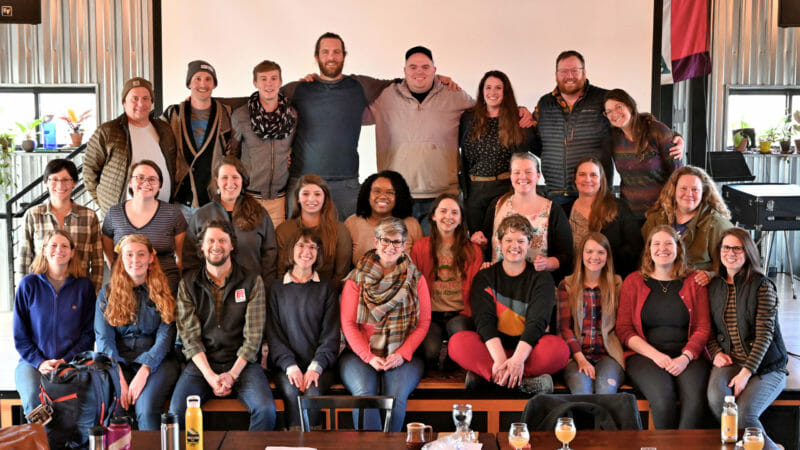From Three to 10 to 30
Hiroshi Mikitani, founder of Rasputen, Japan’s largest online marketplace, has a rule of three and 10. This means that “everything” breaks in a company every time you roughly triple in size.
When you’re a one-person company, you do everything and boot-strap it together. But processes change when you move to a team of three, 10, 30, 100 and so forth. “Everything” includes communications systems, payroll, accounting, budgeting, customer support, onboarding, employee structures decision-making, processes, procedures and more.
I’ve been around the sun 14 cycles as a PFI staffer. I wasn’t here when there were three staff, but it was close. When I started, PFI had four full-time staff members: Teresa Opheim, Gary Huber, Rick Exner and Cedar Johnson. Excitingly, Practical Farmers has hit that 30-staff mark, meaning we’ve gone through this tripling in growth almost twice during my PFI tenure.
This continued growth is with purpose: PFI’s strategic plan, co-created with our membership, charges us to grow organizational capacity for long-term impact, so that PFI is well-positioned for success, impact and growth. Together, we want to bring our farmer-to-farmer network model to more people, accelerating farmer and landscape change, so we can achieve our vision: an Iowa with healthy soil, healthy food, clean air, clean water, resilient farms and vibrant communities.
With a lot of research (including good conversations with partner organizations like Brian Depew from Center for Rural Affairs, who referred us to Mikatini’s rule of three and 10) we have re-envisioned our organizational design. Organizational design defines how we focus our attention and resources to achieve our mission. As is common, the model we have landed on is a hybrid, fusing together functional, network and team structures to best situate PFI to achieve our bold strategic goals.
What does this mean? Functional structure organizes our staff into departments by function, allowing employees to focus their efforts. When I started in 2007, it was quite effective for us to all be jacks of all trades, and to come to decisions by consensus. That approach certainly doesn’t serve us well at our current organizational size. A functional structure will enable us to have clarity about our roles, hone our skills and have more impact.
But functional structure has a risk of reducing transparency and collaboration as we work. To remedy this, PFI staff will also convene as teams to increase cooperation while distributing decision-making and accountability toward our goals.
The network component of PFI’s design is not new; it’s PFI’s crown jewel, what the organization was created from and for. PFI’s network cannot be overstated or undervalued. Members lead our organization through guidance and participation.
We work extensively with partners to collaboratively meet our shared goals. Identifying PFI’s network in our organizational design pays tribute to its importance, and helps us all understand why PFI has a track record of building resilient farms and communities – we are doing it with a broad base of people. Alone, we only can do a little. Together we accomplish a lot!
While we are a ways from the next organizational “breakage,” per Mikitani’s rule, we are excited to keep collaborating with all of you as we work toward that next threefold milestone (100 staff!!). Together, we will continue to grow with purpose in our quest to transform Iowa and beyond.

